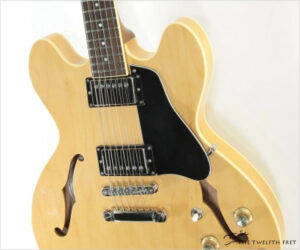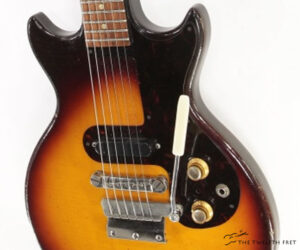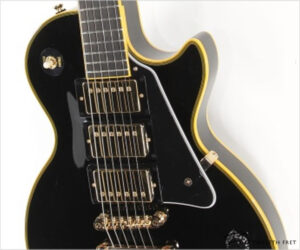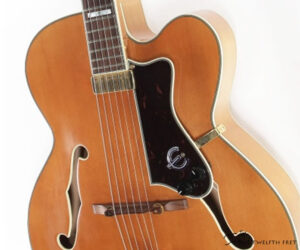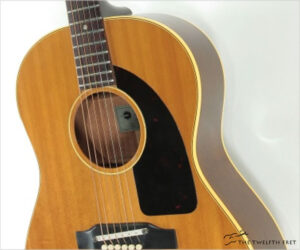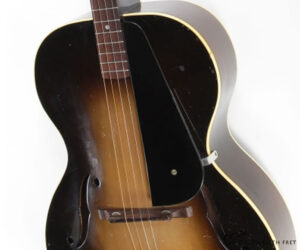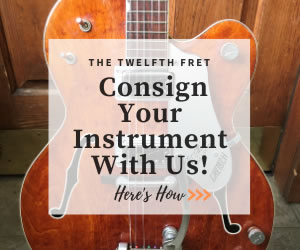Here is an excellent Epiphone Elitist ES-335 /NA in Natural finish, built during 2006 at the Terada plant in Nagoya, Japan. This is the same plant that builds many pro-line guitars, including Gretsch models, and this guitar illustrates the quality of their work. The Epiphone Elitist ES-335 is based on an early 1960’s Gibson ES-335 with dot position markers, but it is not an exact copy.
Epiphone
Shown here is a fairly rare guitar – an Epiphone Olympic Special, built during 1963 at the Gibson Kalamazoo plant and looking almost exactly like a single-pickup Melody Maker. This version was offered from 1963 to 1969, with a production total of around 3,000 guitars.
This instrument has sold
MORE →With an official launch in October 2020, the Epiphone Joe Bonamassa Black Beauty was based on a classic 1958 Les Paul Custom. In 1957, three of Gibson’s then-new humbucking pickups replaced the P-90 and Alnico V ‘Staple Top’ pickup set of previous Customs. From its introduction in 1954 until the 1961 redesign, the Les Paul Custom had a major difference from the other carved-top Les Pauls hidden under the gloss black finish.
This instrument has sold
MORE →Built as a ‘reissue’ from 1995 to 2011, the Epiphone Emperor Regent is a full 17 inch wide archtop guitar with a single floating pickup and pickguard-mounted controls. The label reads ‘Epiphone Emperor NA’ (NA meaning Natural Antique), the Emperor model had two top-mounted pickups, the Regent has one floating pickup. From their 1939 introduction, the Epiphone Emperor Regent and upgraded Emperor were at the top of the Epiphone archtop line, with Gibson as their main competition.
This instrument has sold
MORE →Built at the Gibson Kalamazoo plant, the natural-finish Epiphone FT45N Cortez was produced from 1962 to 1969, but it first appeared with a sunburst in 1958. The Epiphone FT45N Cortez was very similar to some Gibson models, particularly the LG-2 (sunburst top) and LG-3 (natural top), which in 1962 became the sunburst B25, and in 1963 the natural B25N. They were built in the same plant and likely on identical forms.
This instrument has sold
MORE →The Epiphone Masterbilt Melody Tenor guitar was built from 1931 to 1937 in New York, largely supporting the great banjoist migration of the period. In the late 1920’s banjo players, for a variety of reasons, began to move to guitar-based instruments and the Tenor guitar mapped almost directly to tenor banjos.
This instrument has sold
MORE →